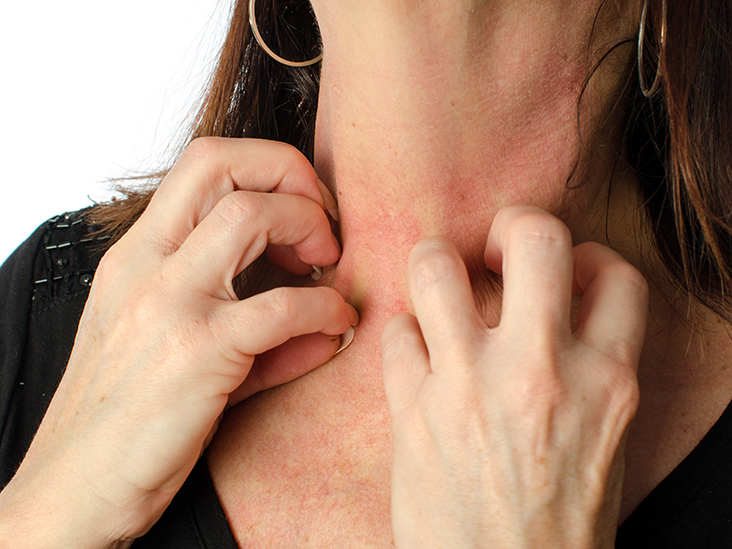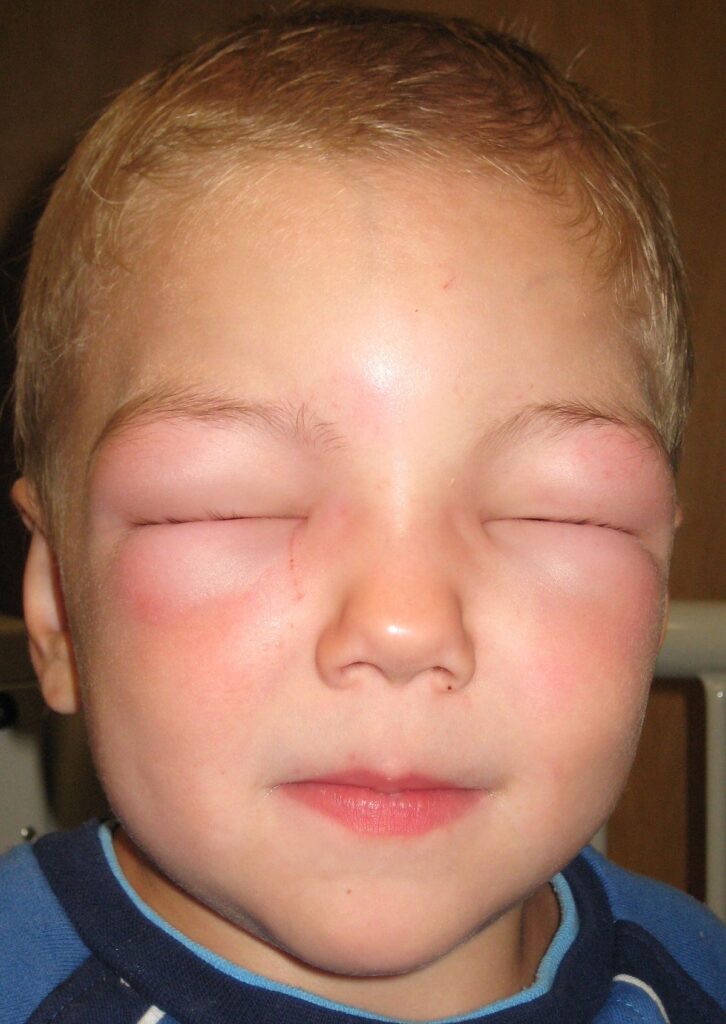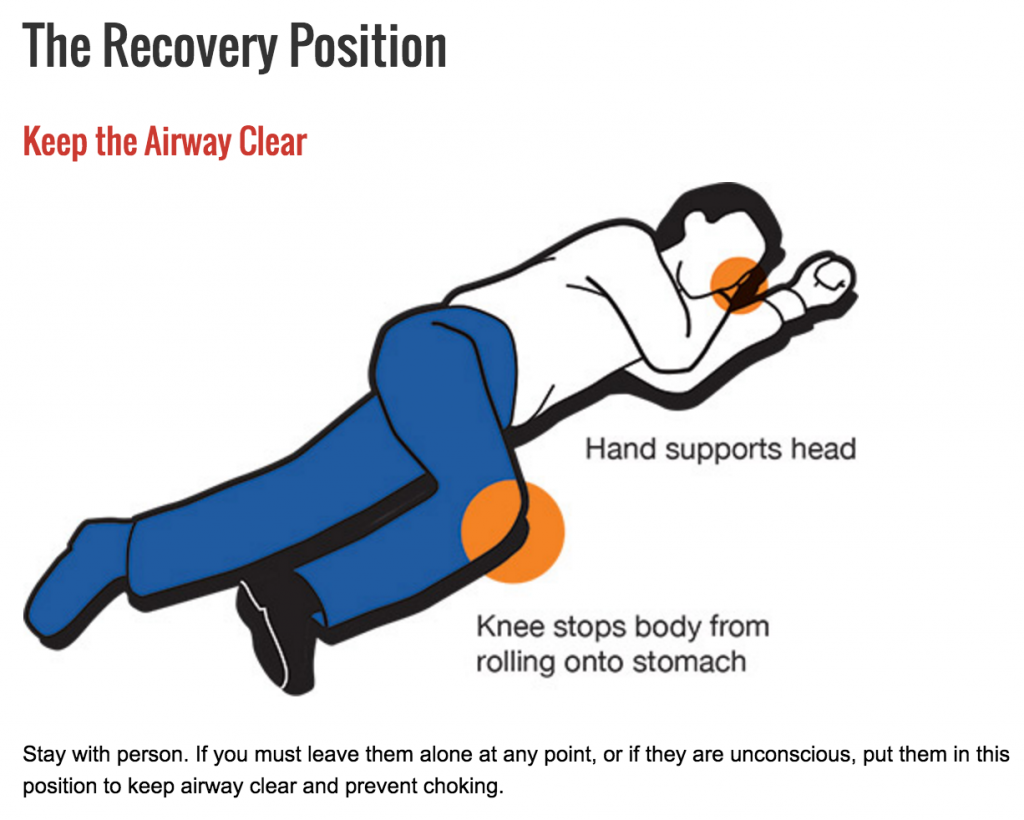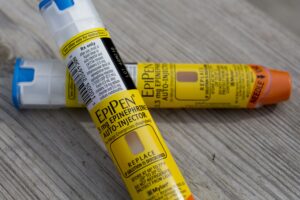Seasonal Allergy Emergency
How Doctors Recommend Handling a Seasonal Allergy Emergency
Seasonal Allergy Emergency Overview
Some types of allergies can trigger a severe reaction known as anaphylaxis. A life-threatening seasonal allergy medical emergency, anaphylaxis can cause you to go into shock.
Symptoms of a seasonal allergy emergency, a severe allergic reaction (anaphylaxis)
- difficult or noisy breathing
- swelling of the tongue
- swelling or tightness of the throat
- difficulty talking or a hoarse voice
- wheeze or persistent cough
- persistent dizziness or collapse
- paleness and floppiness in young children
- abdominal pain and vomiting.
- Loss of consciousness
Milder allergic symptoms that can appear before a severe allergic reaction include:


What should be done at this moment?
If you are with someone who is having an allergic reaction and shows signs of shock, act fast. Look for pale, cool and clammy skin; a weak, rapid pulse; trouble breathing; confusion; and loss of consciousness. Do the following immediately:
- Use an epinephrine autoinjector, if available, by pressing it into the person’s thigh.
- Call 911 or emergency medical help.
- Lie the person down flat – unless they are unconscious, pregnant or having breathing difficulties.
- Check the person’s pulse and breathing and If the person’s breathing or heart stops, cardiopulmonary resuscitation (CPR) should be performed immediately.
- Give another injection after 5 to 15 minutes if the symptoms do not improve and a second auto-injector is available.
Positioning
- most people should lie flat
- pregnant women should lie on their left side to avoid putting too much pressure on the large vein that leads to the heart
- people having trouble breathing should sit up to help make breathing easier
- people who are unconscious should be placed in the recovery position to ensure the airway remains open and clear – place them on their side, making sure they are supported by one leg and one arm, and open their airway by lifting their chin
- avoid a sudden change to an upright posture such as standing or sitting up – this can cause a dangerous fall in blood pressure

Adrenaline auto-injectors for seasonal allergy emergencies
People with potentially serious allergies are often prescribed adrenaline auto-injectors to carry at all times. These can help stop an anaphylactic reaction becoming life threatening.
Adrenaline is the first-line treatment for severe allergic reactions allergens.
Adrenaline acts fast and rapidly treats most dangerous symptoms of anaphylaxis, including throat swelling, difficulty breathing and low blood pressure. It also helps alleviate itching, rash, swelling, gastrointestinal and genitourinary symptoms. It works most effectively if it is given within the first few minutes of a severe allergic reaction. either by the person experiencing anaphylaxis or someone helping them.
Make sure you are aware how to use your type of auto-injector correctly. And, always carry 2 of them with you.
There are 3 main types of adrenaline auto-injector, which are used in slightly different ways.
These are:
• EpiPen
• Jext
• Emerade
Instructions are also included on the side of each injector if you forget how to use it or someone else needs to give you the injection.
We will discuss EpiPen because it is the most common adrenaline autoinjector used
EpiPen
What is EpiPen

EpiPen® is an adrenaline auto-injector (AAI) used for self-administration of adrenaline for the emergency treatment of severe allergic reactions (anaphylaxis).
- Delivers the correct dose of adrenaline quickly.
- Has needle protection which deploys immediately after administration.
- Familiar jab administration and 3 second hold time during injection, making it quick to administer in an emergency.
How to use it
1. Remove the blue safety cap
Grasp the EpiPen® in dominant hand and remove the blue safety cap.
2. Position the orange tip
Hold the EpiPen® approximately 10cm away, with the orange tip pointing towards outer thigh.
3. Jab the orange tip
Jab the EpiPen® firmly into outer thigh at a right angle. Hold firmly for 3 seconds, before removing and safely discarding.
4. Dial 911
Dial 911, ask for an ambulance and say ‘anaphylaxis’.
Site of injection
It should only be injected into the anterolateral aspect of the thigh, NOT ANY OTHER PART OF THE THIGH OR BUTTOCK. The outer thigh is the safest site for Intramuscular (IM) injection as there is minimal risk of injection into major blood vessels or nerves in this area.

Advantages of EpiPen
- Viewing window
The EpiPen® must be replaced in line with the expiry date. In addition, check the EpiPen® regularly to make sure the solution is clear and colorless. If the solution becomes discolored or contains particles it should be replaced.

- Needle cover
This keeps the needle covered before and after use.
Types of EpiPen
- EpiPen® auto injector 0.3mg is recommended for adults and children weighing >25kg.
- EpiPen® Jr. auto injector 0.15mg is recommended for children weighing between 7.5 – 25kg.
Side effects and precautions
- Potential side effects include an increase in heart rate, a stronger or irregular heartbeat, sweating, nausea and vomiting, difficulty breathing, paleness, dizziness, weakness or shakiness, headache, nervousness, or anxiety. However, these side effects usually disappear quickly, especially if the patient rests.
- It should be used with caution in patients with high blood pressure and thyroid conditions (as side effects can last longer) and in pregnancy. Blood sugar may increase in patients with diabetes and symptoms can temporarily get worse in patients with Parkinson’s disease.
- Overdose of adrenaline is unlikely with EpiPen
- Even if your symptoms improve after an epinephrine injection, you should go to the emergency department to make sure symptoms do not return when the effects of the injection wear off.
- If you have had a severe allergy attack or any signs and symptoms of anaphylaxis in the past, make an appointment to see your doctor. Evaluation, diagnosis and long-term management of anaphylaxis are complicated, so you will probably need to see a doctor who specializes in allergies and immunology.
Other kinds of self-administered treatments related to seasonal allergy emergencies
Antihistamines
Antihistamines are medicines often used to relieve symptoms of allergies, such as hay fever, hives, conjunctivitis and reactions to insect bites or stings.
Most antihistamines can be bought from pharmacies and shops, but some are only available on prescription.
Types of antihistamines
They are divided into 2 main groups:
• antihistamines that make you feel sleepy – such as chlorphenamine, hydroxyzine and promethazine
• non-drowsy antihistamines that are less likely to make you feel sleepy – such as cetirizine, fexofenadine and loratadine
They also come in several different forms – including tablets, capsules, liquids, syrups, creams, lotions, gels, eyedrops and nasal sprays.
Which type is best?
There is not much evidence to suggest any particular antihistamine is better than any other at relieving allergy symptoms.
Some people find certain types work well for them and others do not. You may need to try several types to find one that works for you.
Non-drowsy antihistamines are generally the best option, as they are less likely to make you feel sleepy. But types that make you feel sleepy may be better if your symptoms stop you sleeping.
How to take antihistamines
Take your medicine as advised by the pharmacist or doctor, or as described in the leaflet that comes with it.
Before taking an antihistamine, you should know:
- how to take it – including whether it needs to be taken with water or food, or how to use it correctly (if eyedrops or a nasal spray)
- how much to take (the dose) – this can vary depending on things such as your age and weight
- when to take it – including how many times a day you can take it and when to take it (some types should be taken before bedtime)
- how long to take it for – some types can be used for a long time, but some are only recommended for a few days
- what to do if you miss a dose or take too much (overdose)
The advice varies depending on the exact medicine you are taking. If you are not sure how to take your medicine, ask a pharmacist.
Side effects of antihistamines
Like all medicines, antihistamines can cause side effects.
Side effects of antihistamines that make you drowsy can include:
- sleepiness (drowsiness) and reduced co-ordination, reaction speed and judgement – do not drive or use machinery after taking these antihistamines
- dry mouth
- blurred vision
- difficulty peeing
Side effects of non-drowsy antihistamines can include:
- headache
- dry mouth
- feeling sick
- drowsiness – although this is less common than with older types of antihistamines
Written by: Dr. Ahmed Abdelmajeed (April 04, 2021)
Sources
- MHRA guidelines- https://www.gov.uk/drug-safety-update/adrenaline-auto-injectors-updated-advice-after-european-review Last access September 2020.
- Simons, F.E.R., 2011. World allergy organization guidelines for the assessment and management of anaphylaxis. World Allergy Organization Journal, 4(2), pp.13-37.
- EpiPen® (adrenaline) Auto-Injector 0.3mg SPC. Available at https://www.medicines.org.uk/emc/product/4289/smpcLast accessed: September 2020.
- Resuscitation Council (UK) Guidelines. January 2008. Available at: https://www.resus.org.uk/anaphylaxis/emergency-treatment-of-anaphylactic-reactions/ Last accessed May 2020.
- https://www.epipen.co.uk/en-gb/hcp
- https://www.mayoclinic.org/diseases-conditions/allergies/symptoms-causes/syc-20351497
Medically Reviewed By

Alexandria University Hospital
I have reviewed the articles on seasonalallergies.org and I would like to say that I was very surprised.
Over years, I have seen many different articles in the field of allergy, but these articles were very interesting.
These articles were really unique, they could help many people around the world to know more about seasonal allergy, symptoms, prevention and when to seek medical advice.
These articles represent an addition in the field of Health Education not only for people with allergy but also for the whole population.
Looking for more treatment options? Find a full list of other seasonal allergy treatment options here.
Last Updated on July 5, 2023